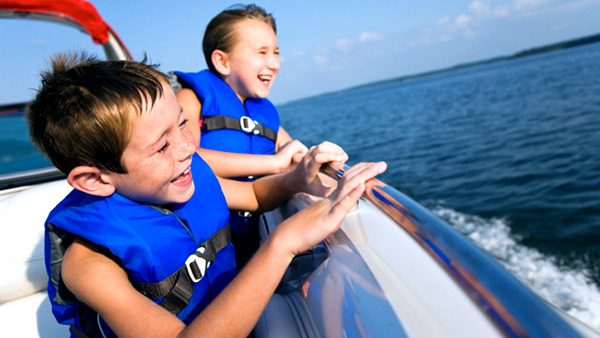A refresher on water sport and boating safety

The first tip for safe boating: Wear a Coast Guard-approved life jacket.
Boating activity rose significantly during the pandemic, based on increased boat sales, new insurance policies and increased claims and calls for towing assistance. With more people on the water comes more potential for injuries.
In its annual report of recreational boating statistics for 2020, the most recent year available, the U.S. Coast Guard counted more than 5,200 accidents involving 767 deaths, 3,191 injuries and approximately $62.5 million in property damage.
The five primary contributing factors in recreational boating accidents are:
operator inattention
operator inexperience
improper lookout
excessive speed
defective machinery
SAFETY TIPS
To prevent injuries while on the water this boating season:
Wear a life jacket
In 2020, the Coast Guard reported 75% of boating deaths were caused by drowning, and a shocking 86% of those victims were not wearing life jackets. Be sure to wear Coast Guard-approved life jackets. Blow-up mattresses, water wings, foam “noodles” or inner tubes are not a substitute for life jackets.
Avoid alcohol
Whether boating, waterskiing or riding personal watercraft, alcohol greatly increases the risks of an accident, regardless of whether it’s the operator or passengers who are drinking. Alcohol influences balance, coordination and judgment, and its effects are magnified by the sun and heat.
According to the Coast Guard, where the primary accident cause is known, alcohol use is the leading known contributing factor in nearly 18% of all fatal boating accidents. The U.S. Centers for Disease Control and Prevention estimates alcohol use may be involved in nearly 70% of deaths associated with water recreation.
Use the buddy system when swimming
Make sure someone knows where you are at all times, and know the water terrain. Scan swimming areas for drop-offs, and be aware of hidden obstacles in the water.
Watch for rip tides
Rip tides can occur along any coastline. Signs of a rip tide include discolored or foamy water that moves in a narrow channel away from the shore. If you find yourself caught in a rip tide, remember to swim parallel to shore until you’re outside the current, when you can swim back in to shore.
Prevent dehydration
Perhaps the most unrecognized danger to water skiers and personal watercraft riders is dehydration. This is especially common when riding on salt water. Water skiing and riding personal watercraft can be a vigorous physical activity, and it is possible to lose a great deal of water without realizing it. When a person becomes dehydrated, reaction time and awareness are impaired. The National Institutes of Health recommends daily water intake of 91 and 125 fluid ounces (2.7 to 3.7 liters) of water per day for adults, depending on weight, age and activity level. The National Institute of Occupational Safety and Health recommends drinking up to a quart of water per hour when active in hot weather in order to maintain hydration and prevent heat stress.
Guard against sunburn
Cooling winds on the water can convince water skiers, personal watercraft riders or boaters that they are not receiving much direct sunlight. This is false, and many people sustain skin damage from sunburns.
Follow precautions so you can avoid the emergency room and spend more time outside enjoying the water this summer.
MORE INFORMATION
This loss control information is advisory only. The author assumes no responsibility for management or control of loss control activities. Not all exposures are identified in this article. Contact your local, independent agent for insurance coverage advice and loss control information.



